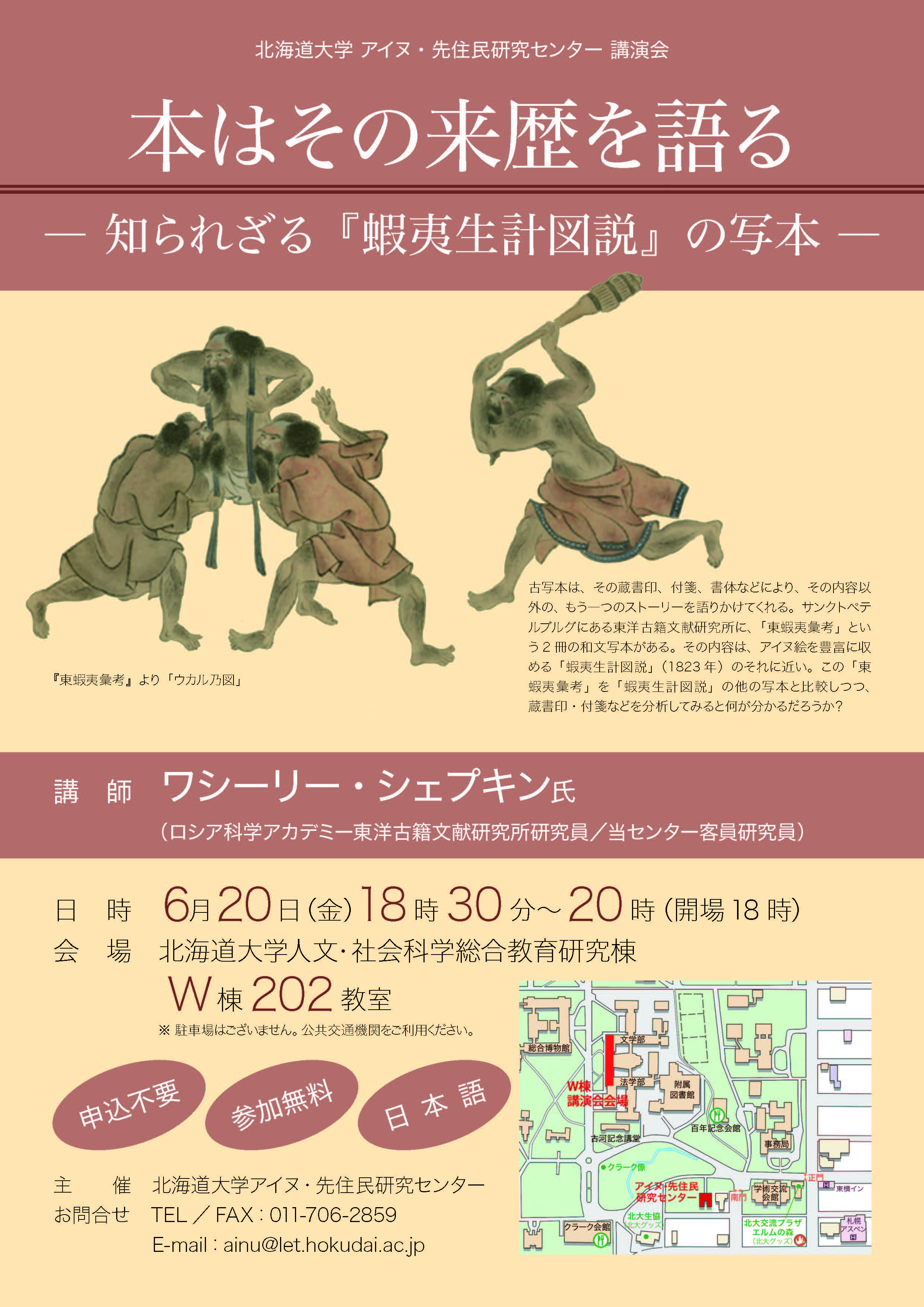Per usual, it seems like every talk and presentation is happening on the same weekend! Because of the upcoming trip to Tokyo for ASCJ, I will have to miss this presentation by a brilliant visiting researcher here at Hokkaido University, Vasily Shchepkin [ワシーリー・シェプキン] (St. Petersburg Institute of Oriental Manuscripts, Russian Academy of Sciences). If you have an interest in Ainu-e and happen to be in the area, I think this will be an interesting talk. I’m sad to have to miss it, especially as I have been looking at the work Ezo seikei zusetsu lately, in an entirely different context. The talk will be in Japanese, but here are some of the details for those interested. Admission is free and no reservation is required to attend.
 Lecturer:
Lecturer:
Vasily Shchepkin
(Saint Petersburg Institute of Oriental Manuscripts, Russian Academy of Sciences)
Date/Time
June 20th, 2014 (Friday), 6:30-8:00pm (doors open at 6:00pm)
Location:
Humanities and Social Sciences Classroom Building [北海道大学人文・社会科学総合教育研究棟] (W Bldg), 2nd Floor, Room 202
Address: Sapporo-shi, Kita-ku, Kita 10, Nishi 7 chome, on the grounds of Hokkaido University
Sponsored By:
Hokkaido University Center for Ainu and Indigenous Studies
Content: When looking beyond the content of old manuscripts, the ownership mark [蔵書印], label [付箋], and calligraphic style [書体] tell us an additional story. There are two Japanese volumes titled Higashi ezochi ikou [東蝦夷彙考] at the Saint Petersburg Institute of Oriental Manuscripts. The contents of these works are filled with an abundance of Ainu-e similar to that of Ezochi seikei zusetsu [蝦夷生計図説] (1823). When comparing this Higashi ezochi ikou with other manuscripts of Ezochi seikei zusetsu, what can be learned from the analysis of the ownership mark and label?
Japanese announcement: click here